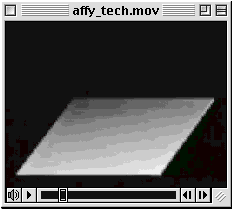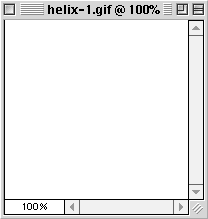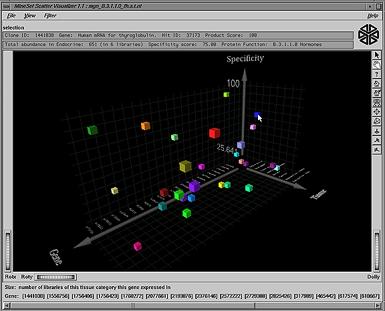





|
../encoding/embodiment_illegibility.html The difficulty with all of this is that the abstractness of the relation of molecular biology and informatics to some notion of "the body" has become so tenuous that one is tempted to suggest the dis-appearance of that cultural-material construct the body in the face of these developing technosciences. |
Bioinformatics Excellence
The sequence analysis and assembly tools built into LifeSeq sofware also allow scientists to compare gene sequences, to assign putative functional characteristics, to assemble consensus sequences, to identify polymorphisms, and even to "clone" new genes. New Java-enabled template viewers make it easier than ever to quickly assess results from BLAST searches for putative homologs and splice variants allowing the user to drill down to nucleotide level differences.
| Much of this is evident in media reports and anti-genetics publications, many of which approach and even assume the gene as an anatomical object, something akin to a limb or an organ. In cases concerning genetic patenting, to codify genes in this way is to violate an individual's self and body, their genes being proper to the individual in the same way that an organ or limb is. |
| But, rather than simply add to the already lengthy list of claims for the disappearance of the body, perhaps what is also at stake is the tenability - or rather "legibility" - of discourses encoding the body as corporeal, anthropomorphic, biologically sexed, and semi-autonomous with relation to environment. In other words, there is no body to disappear with the application of informatics to genetics, for, at least since the 1950s, genetics and molecular biology generally have always been about considering the organism as an information-processing system. |
| But if the category of the body is no longer tenable, perhaps the case is different with regards to what N. Katherine Hayles terms "embodiment." Hayles suggests that embodiment is always at some proximity of difference to the "body," where the latter is taken as that historically-shifting hegemonic concept to which the former is never quite identical. In information theory terms, embodiment constitutes the noise differential of the body, and in doing so is also never prior to or external to those sets of normative constraints. |
| Embodiment is, then, also a contextualized materialization; as scientific objects called genes, as informatic objects called databases, as communicative objects called networks. Thus, in looking at bioinformatics and its manifestations on the Internet, one primary question is how those databases and the networks they operate on relate to various notions of the body and embodiment; how "bodies" termed "genes," "data," "sequences," "networks," "organization," and "databases" are all technoscientifically deployed, as well as how a range of possibilities constituting "embodiment" are equally enframed. |
| Features |
| Gene sequence database for 19 microbial organisms |
| Browse a catalog of the ORFs within a genome, grouped by functional category |
| Display the relative position of all ORFs within a contig |
| Search for genes that are either common among microorganisms or unique to one genome |
| Electronic Southern identifies all organisms containing a given gene or ORF |
| Search and browse exact nucleotide alignments for all sequences in the database |
| Analysis Tools: BLAST ClustalW GCG Assembly |
| Features |
| Browse all cDNA sequences (ESTs) mapped to a given chromosome |
| Find clones and sequences and view their mapping information |
| BAC Screening based on probe name, chromosome or BAC |
| Browse probe names by tissue type and donor information via links to LifeSeq |
| Analysis Tools include: BLAST ClustalW GCG Assembly |